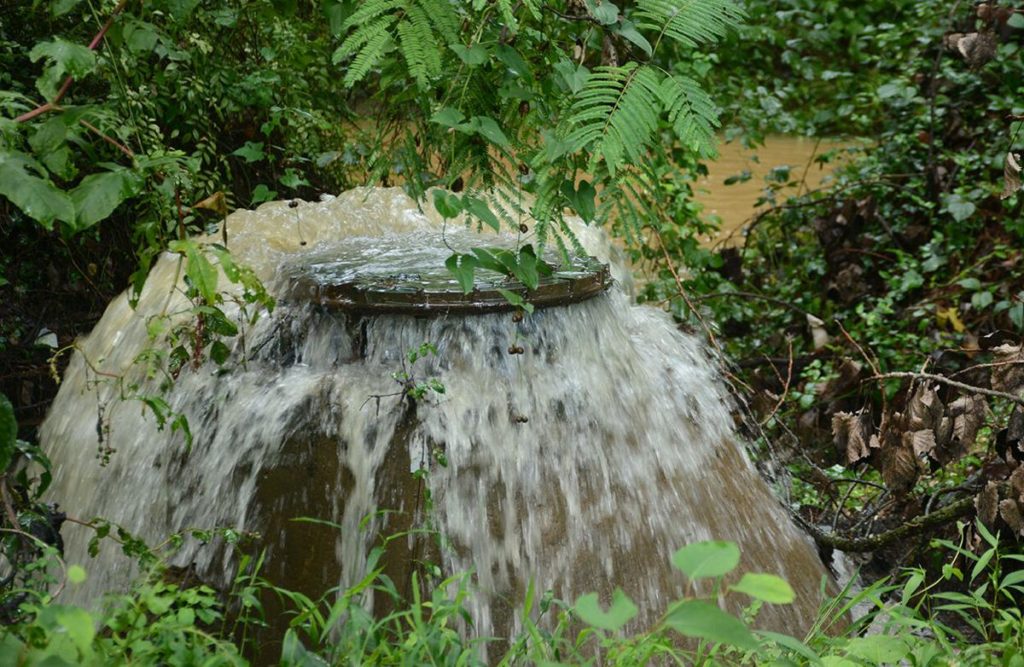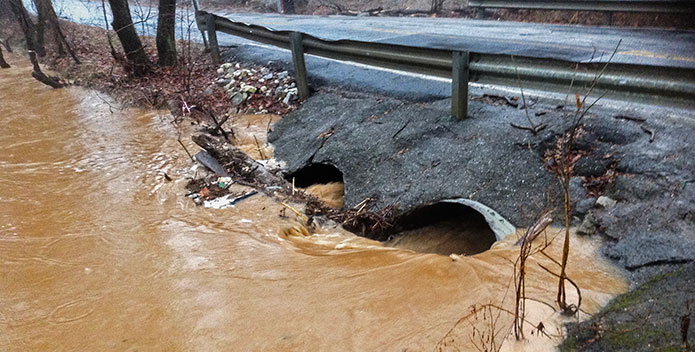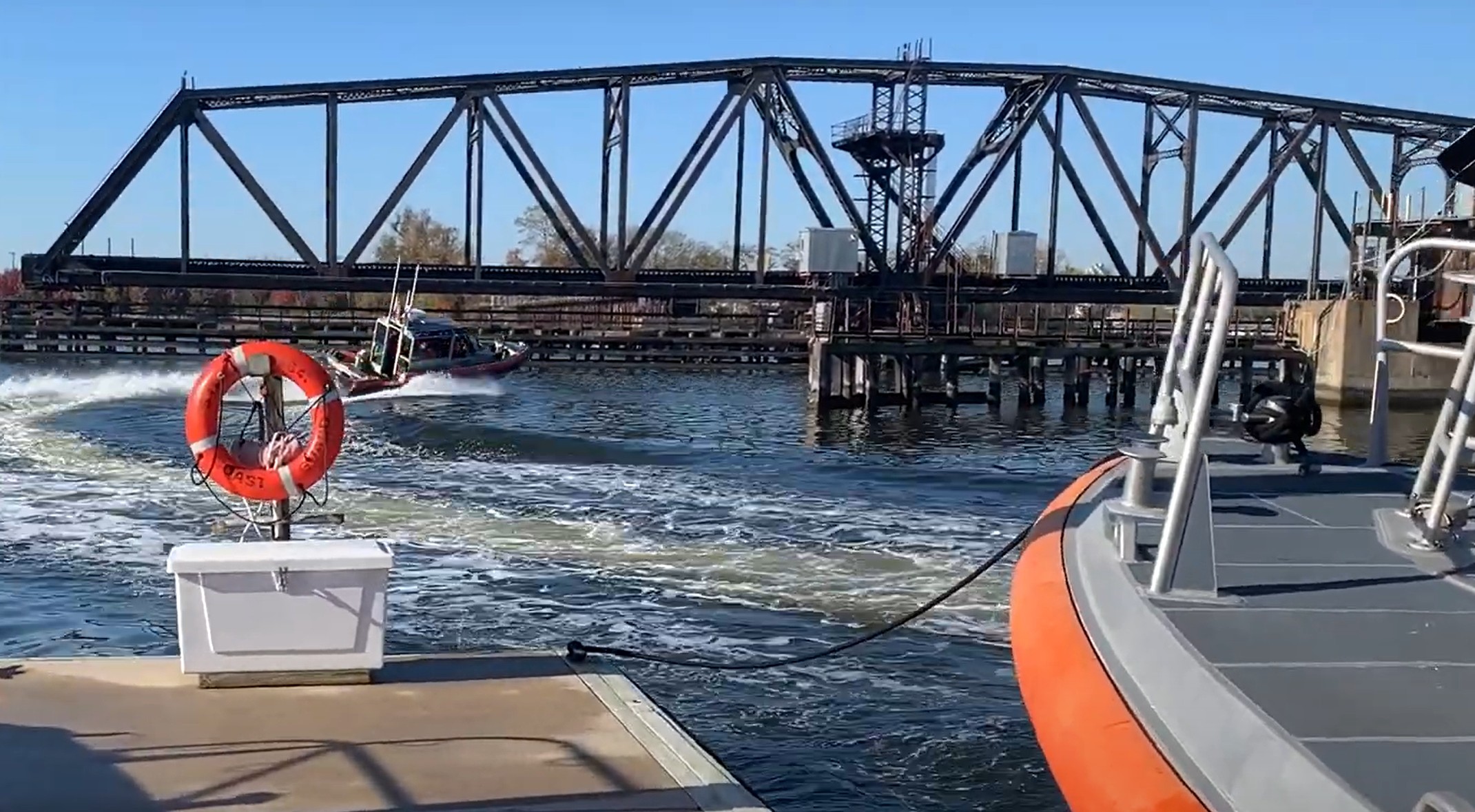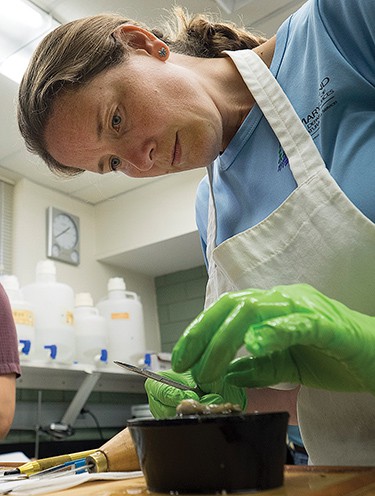By Whitney Pipkin, Bay Journal News Service
Three environmental organizations are suing Virginia’s Henrico County in federal court over a history of sewage overflows and pollution discharges to tributaries of the James River near Richmond.
The lawsuit was filed Monday by the James River Association, represented by the Environmental Integrity Project, and the Chesapeake Bay Foundation. In the suit, they allege that outdated sewer and wastewater systems have allowed the release of more than 66 million gallons of raw sewage into the James River system since 2016.
The Henrico County Water Reclamation Facility also has exceeded at least 10 times since 2019 its permit limits for suspended solids, or sediment, that can be released to the James and its tributaries, state records show.
Because of these chronic issues, the county facilities have for years operated under consent orders with the Virginia Department of Environmental Quality. But, the groups point out, those orders have not contained deadlines or holistic plans to update infrastructure and end the pollution.
The consent orders also have not required the utility to notify residents when sewage overflows occur. Bacteria and pathogens from raw sewage leaking into waterways poses health risks to people who fish, swim or recreate in James River tributaries.
“What Henrico [County] and the state have done is not enough,” said Sylvia Lam, an attorney with the Environmental Integrity Project. The two parties “have entered into four consent orders to address this … and they have now proposed to enter into a new consent order that looks remarkably similar to the past ones.”
Henrico County spokesman Ben Sheppard said in response that Henrico is “dedicated to protecting the health of the public and is deeply committed to environmental stewardship in Central Virginia and the Chesapeake Bay.”
He said the county was still reviewing the lawsuit and looking “forward to a full presentation of the facts through the legal process.”
Unlike combined sewer systems that were designed in older cities to comingle sewer and stormwater and whisk it out of town as quickly as possible, sanitary sewer systems like the ones occurring in Henrico County are not intended to overflow or leak. But they can be overwhelmed by heavy rain that exceeds the system’s capacity or by mechanical failures that prevent them from operating correctly, causing leaks at several points along a web of pipelines running through a service area.
Maps of recent sewer overflows compiled by the Environmental Integrity Project show a complex system encompassing Richmond and its suburbs—with sewage leak reports scattered throughout the area. Another map indicates that many of the leaks occur in areas that are populated by people of color or low-income communities.
“By failing to fix this problem, Henrico County is putting public health at risk, and we cannot accept that,” said Taylor Lilley, environmental justice staff attorney with the Chesapeake Bay Foundation.
Sanitary sewer overflows tend to be fueled by heavy rains, which can flood the system via manholes and cracked pipes and cause it to overflow. Over the last five years, that system experienced the highest volume of leaks in 2018, with one of the wettest years on record fueling overflows of 49 million gallons that year, according to state records analyzed by the environmental groups.
Higher precipitation levels in recent years have overwhelmed wastewater infrastructure in many cities. But the suit argues that Henrico County has over the last 28 years had plenty of time to correct the underlying issues.
“Compared with other localities that are facing these challenges to sewer infrastructure … there is certainly room for improvement,” said Jamie Brunkow, James Riverkeeper and senior advocacy manager for the river association.
In Henrico County, a series of consent orders with state environmental regulators have “taken a piecemeal approach,” the lawyers said, and have not yet resulted in deadlines or a comprehensive plan to reduce overflows.
The DEQ has issued dozens of water pollution violation notices to the plant over its 32-year history in operation, including nearly two-dozen notices over the plant’s first four years, according to the lawsuit. The first voluntary consent order in 1993 was based on those violations but did not set penalties for failure to comply.
The agency fined the plant less than $30,000 in 2003 and again in 2010 while entering subsequent consent orders, according to the suit. The latest consent order proposed in August includes a $207,680 penalty for violations of previous orders. That order, which has not yet been finalized, also does not include a plan or deadline for systemic improvements.
“Because Henrico County has not fixed this problem to protect the public, we had no alternative but to take legal action,” said EIP attorney Sylvia Lam.
The environmental organizations said they had been in conversation with Henrico County officials and the DEQ and hope to work toward a solution as the legal process unfolds.




